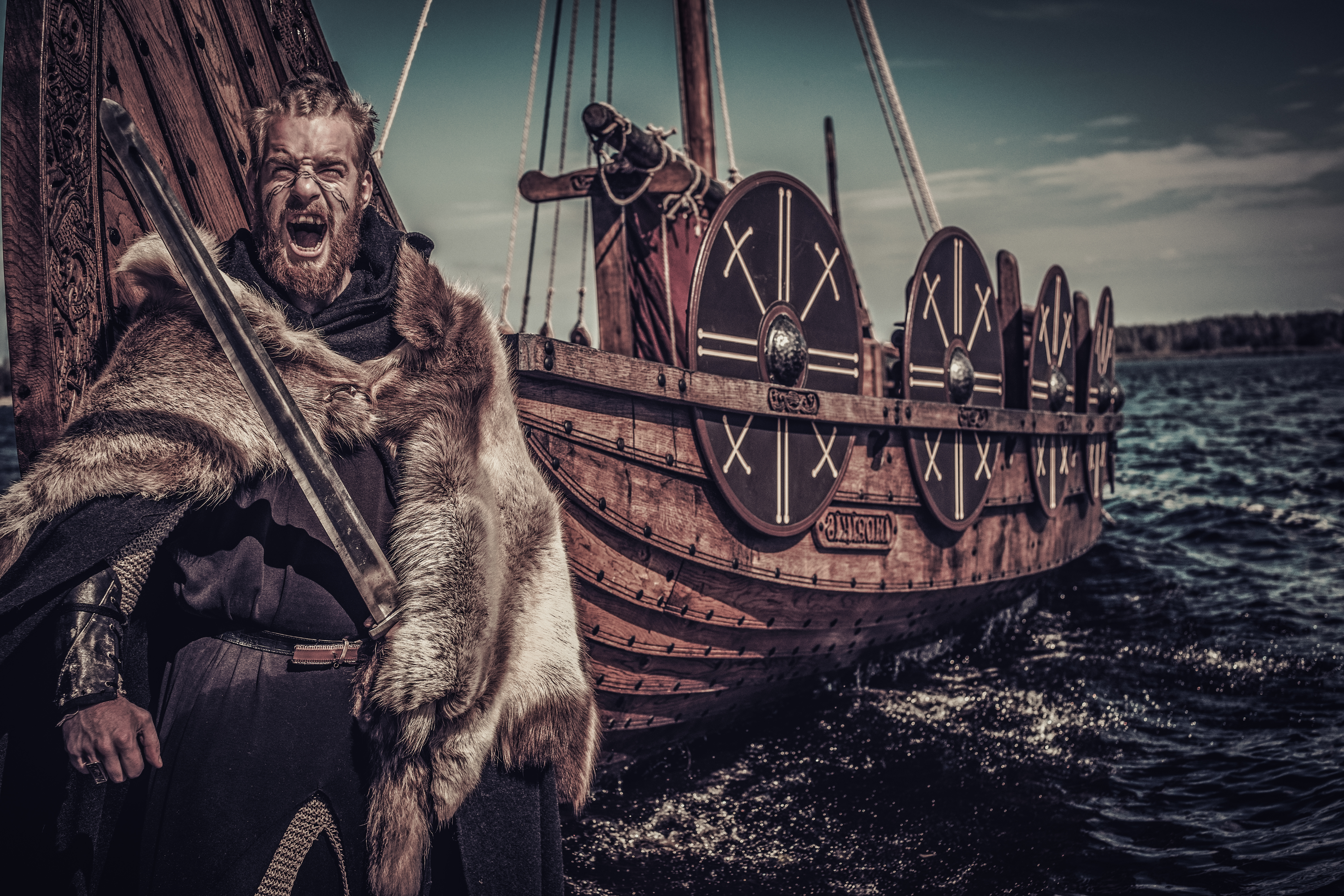
For some background on sailing ships, particularly the effort it would take to weave the sail we can look to Norse Warfare: A Portrayal of Combat, Raids, and Plunder in the Viking Age by Martina Sprague.
Book also provides an estimate on construction time for a ship.
Ships
Sails would typically have an aspect ratio of 3 to 1, in other words three times as wide as they were tall. Book again says typically these would be about 48 feet wide.
A small ship might have a sail about 600 ft.², which would be about 44 feet wide by 15 feet tall. A large ship might have a sale with area of 950 ft.², which would be about 53 feet wide and 18 feet tall.
Author says the larger sail would take something in the range of 80 miles of yarn. That is estimated to be as much as four women would be able to spin over the course of one winter.
The sails were coated with animal fats or tar so they would be water resistant and gather wind.
Author says estimates are the typical ship would require somewhere between 10 and 15 oak trees. Each of them will be split to create between 20 and 30 planks.
Interesting point I’ve not seen before is author says because of the broad bottom and low draft the ships would have taken on lots of water and could have easily capsized in a crosswind.
As a result there was constant bailing of water.
Author says there would have been drain plugs in the ships in order to drain them when ashore.
Construction time
Author says a ship could be built over the course of one winter. No indication of how many men would be working to accomplish this.
As mentioned just a couple paragraphs back, a larger sized sail would require a nonstop effort of about four women over the course of one winter.